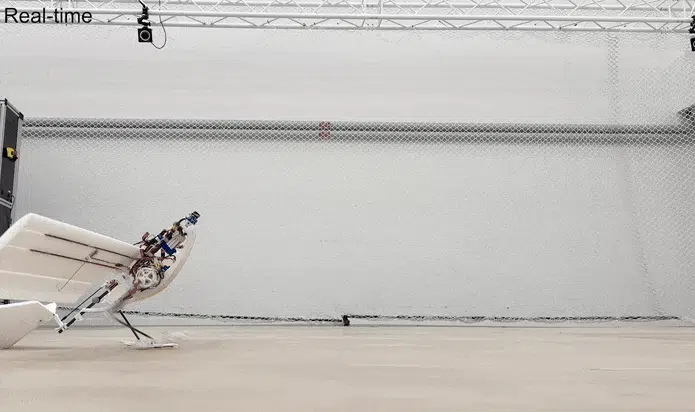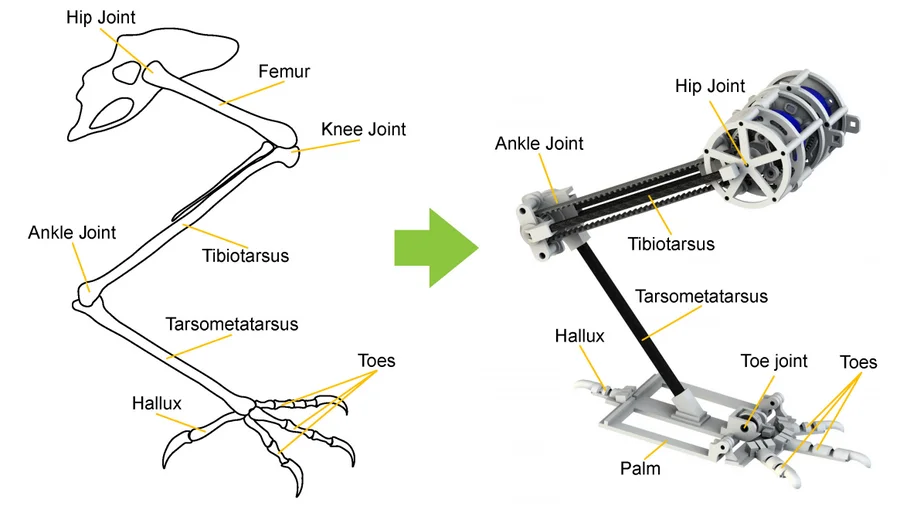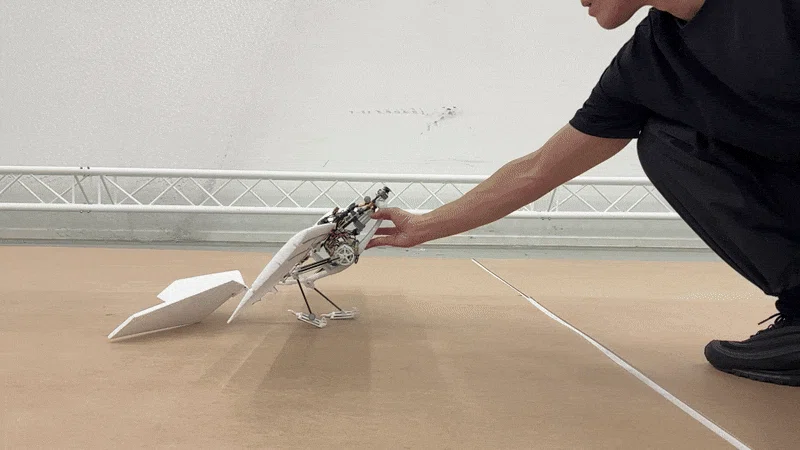Is it a bird, is it a plane? No, it’s a walking drone – with wings, legs and toes that jumps into takeoff
A doctoral student has created the RAVEN drone, with a wingspan of 39 inches, that he hopes might one day be used for deliveries

Technology continuously takes inspiration from natural sources. Think cat’s eye cameras for seeing through camouflage, or AI that replicates the human brain to single out individual sounds in a busy room.
Now, at the Laboratory of Intelligent Systems, at the Swiss École Polytechnique Fédérale de Lausanne, doctoral student Won Dong Shin has created his RAVEN (Robotic Avian-inspired Vehicle for multiple ENvironments) fixed-wing drone.
Its legs were inspired by birds that use jumping takeoffs, similar to crows, and it can also use its legs to walk around on the ground.
The RAVEN is actually roughly the size of a crow, with a wingspan of 39.4in / 100cm, and its body length is about 19.6in / 50cm. It can cover a meter in just under four seconds, and hop over gaps of 4.7in / 12cm, and up obstacles as high as 9.8in / 25cm.
To achieve a jumping takeoff, the RAVEN’s legs can propel the drone to a starting altitude of nearly half a meter with a forward velocity of 4.9mph / 2.2m/s.

“Whenever I encountered crows on the EPFL campus, I would observe how they walked, hopped over or jumped on obstacles, and jumped for take-offs,” says Won Dong Shin.
“What I consistently observed was that they always jumped to initiate flight, even in situations where they could have used only their wings.”
Get the Digital Camera World Newsletter
The best camera deals, reviews, product advice, and unmissable photography news, direct to your inbox!
Shin was interested in the physics behind why birds jump to take off, and how the practice could be used to benefit fixed-wing drones, which otherwise need runways, catapults, or extra weighty propellers to take off.
The RAVEN’s multifunctional legs bring it very close to its avian counterparts, especially in one hilarious way.

While nowhere near as complex as real bird legs, the RAVEN does require its flexible toes in order to stay upright when walking. Without them, it just faceplants as you can see in the video below.
Shin hopes that his leg design will one day be viable on larger fixed-wing drones that could be used for deliveries. A vision system that can be used for both obstacle avoidance and landing is being developed, as are wings that can fold away while in flight to enable the drone to fit through narrow gaps.
Ultimately, Shin wants to make the drone as birdlike as possible despite obvious limitations.
“I am also keen to incorporate flapping wings into RAVEN. This enhancement would enable more birdlike motion and bring more interesting research questions to explore.”
You might also like…
Take a look at our guides to the best camera drones, the best cheap drones, and the best drones for kids.

After graduating from Cardiff University with an Master's Degree in Journalism, Media and Communications Leonie developed a love of photography after taking a year out to travel around the world.
While visiting countries such as Mongolia, Kazakhstan, Bangladesh and Ukraine with her trusty Nikon, Leonie learned how to capture the beauty of these inspiring places, and her photography has accompanied her various freelance travel features.
As well as travel photography Leonie also has a passion for wildlife photography both in the UK and abroad.
